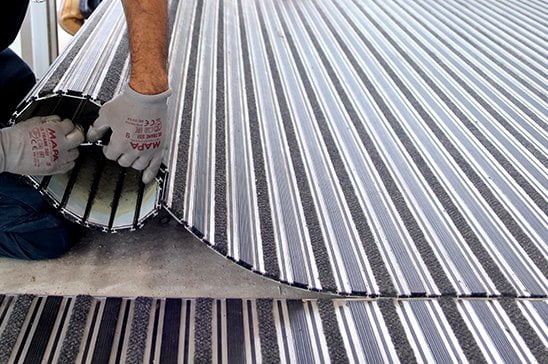
Did you know that today, 6th February 2017 is National Sickie Day? If you have already decided to spend the day at home under the duvet rather than slog away at work today, you won’t be alone! There are all sorts of excuses for workplace absenteeism, some of course more genuine than others. But looking at the bigger picture of workplace absenteeism, did you know that prolonged standing at work, or even sitting at a desk for lengthy periods, could be contributing to many health problems? That’s because musculoskeletal disorders, or MSDs as they are known, are the most common occupational illness. Let me tell you more.
At COBA Europe, we’ve been doing some of our own studies and have produced an informative White Paper on the subject of Standing in the Workplace and the link to workplace absenteeism. We even carried out our own survey involving health and safety officers across a variety of sectors. It revealed that 34% of respondents had colleagues who had experienced back, leg or foot pain as a result of standing at work. I don’t think this is surprising when you compare this to European statistics. According to the 5th European Survey on Working Conditions, 24.7% of workers suffer from backache, 22.8% have muscular pains, and 45.5% complain of working in painful or tiring positions. It is estimated that up to 2% of European GDP is accounted for by the direct costs of MSDs each year.
You may ask why am I (and ‘we’ come to mention it) so fascinated by this subject. As COBA is Europe’s largest supplier of anti-fatigue mats it’s something we have taken very seriously for the last three decades. Oh yes, call me sad, but I find it all very interesting. You see, according to health experts, standing is actually better for us than sitting. Yes, I am standing while writing this – really! In fact, prolonged sitting and sedentary lifestyles could be next the big silent killer even if you work out in the gym. (Sorry to all you gym bunnies but it is about regular changes of posture throughout the day that counts.) Of course, I should remind you that standing for any length of time carries its own set of risks, which is why it needs to be done safely.

This is where I think anti-fatigue mats really come into their own. In fact, some 75% of those questioned in our survey, said that anti-fatigue matting had a positive effect on the wellbeing of their staff and 23% confirmed that absenteeism had been reduced as result of anti-fatigue mats.
So how does anti-fatigue matting work? In short, the subtle underfoot cushioning helps support healthy circulation, which is good for our hearts and helps to reduce the onset of muscular pain. If you are interested in the science of standing then, the White Paper produced by COBA Europe explains this in more detail. It also explains more about the dangers of prolonged sitting, which is why there are more and more standing workstations, not just in factories but also in offices. The last 12 months has seen an upsurge in the popularity of sit/stand desks which is one reason why we introduced Orthomat® Office into our range of anti-fatigue mats. Yes, I’m using one now!

Anti-fatigue mats, whether used in industrial, office or retail environments, can really make a difference to comfort, as well as health and wellbeing. And speaking of health, I sincerely hope that you aren’t one of an estimated 349,000 British workers expected to take a sick day today as suggested by The Employment Law Experts (ELAS). Instead, make 6th February 2017, a day to re-evaluate your work station to see how you can stand more and sit less. And if you need advice on anti-fatigue mats, COBA Europe is the company to call for your workplace matting solutions.









